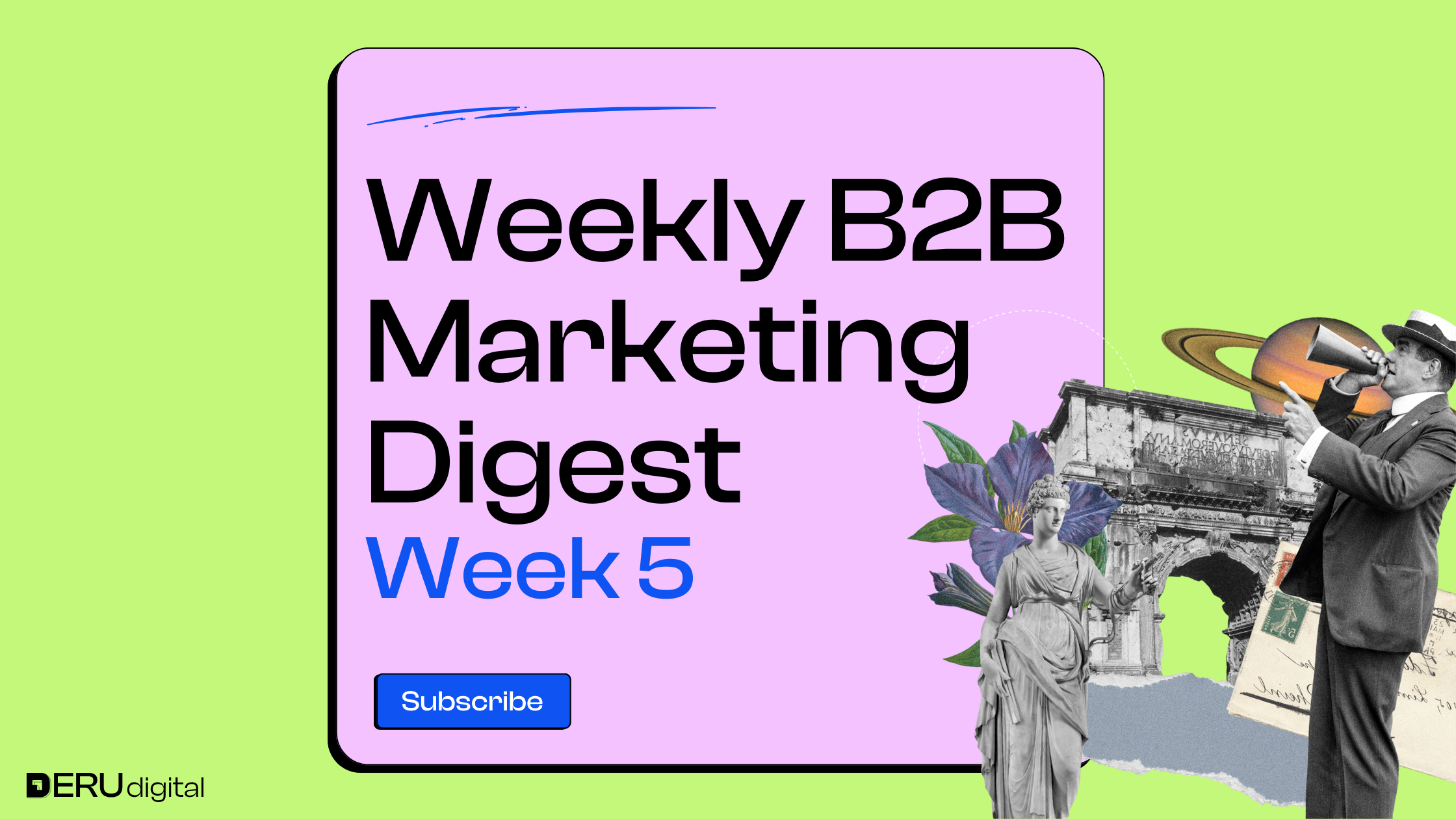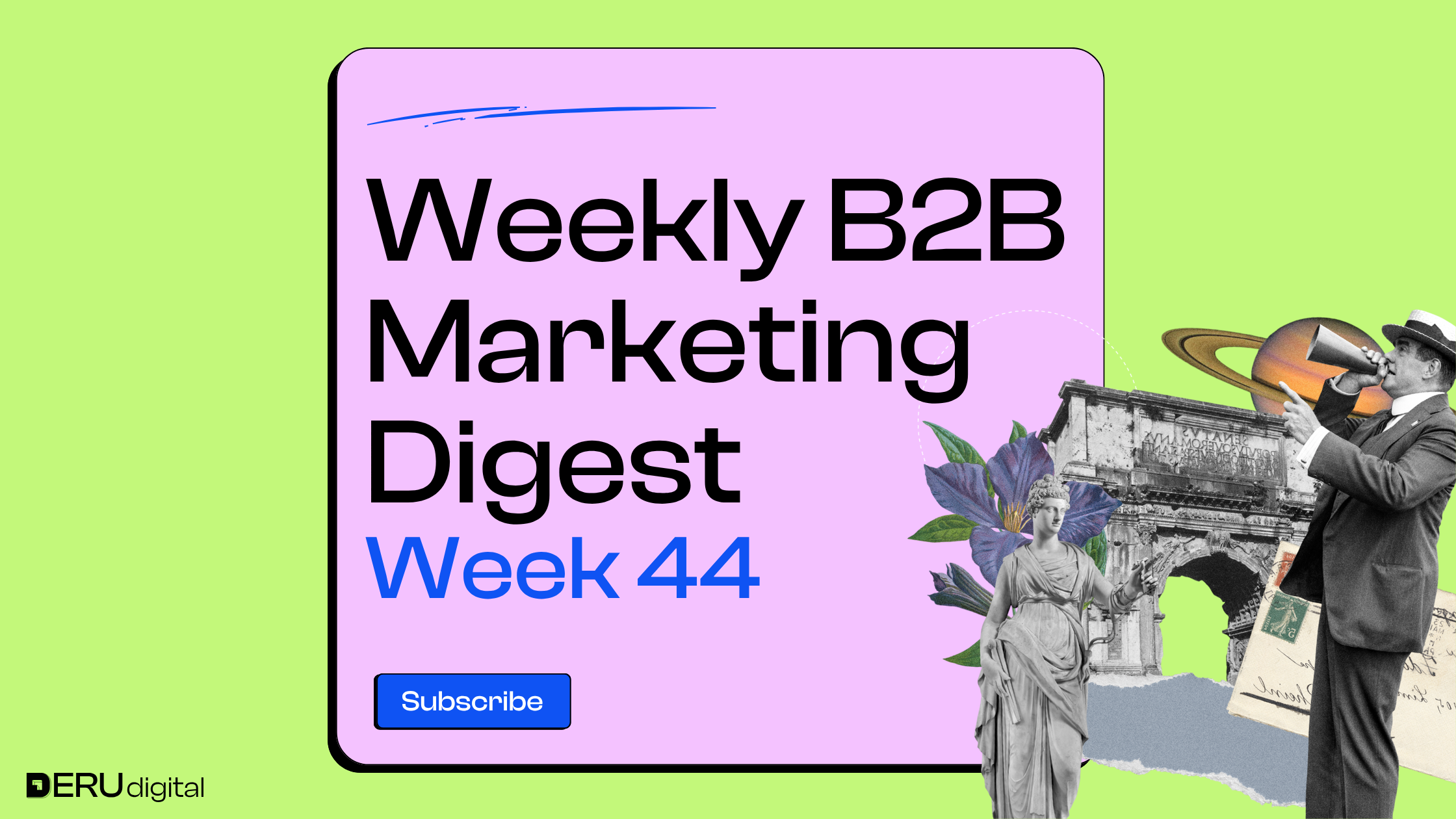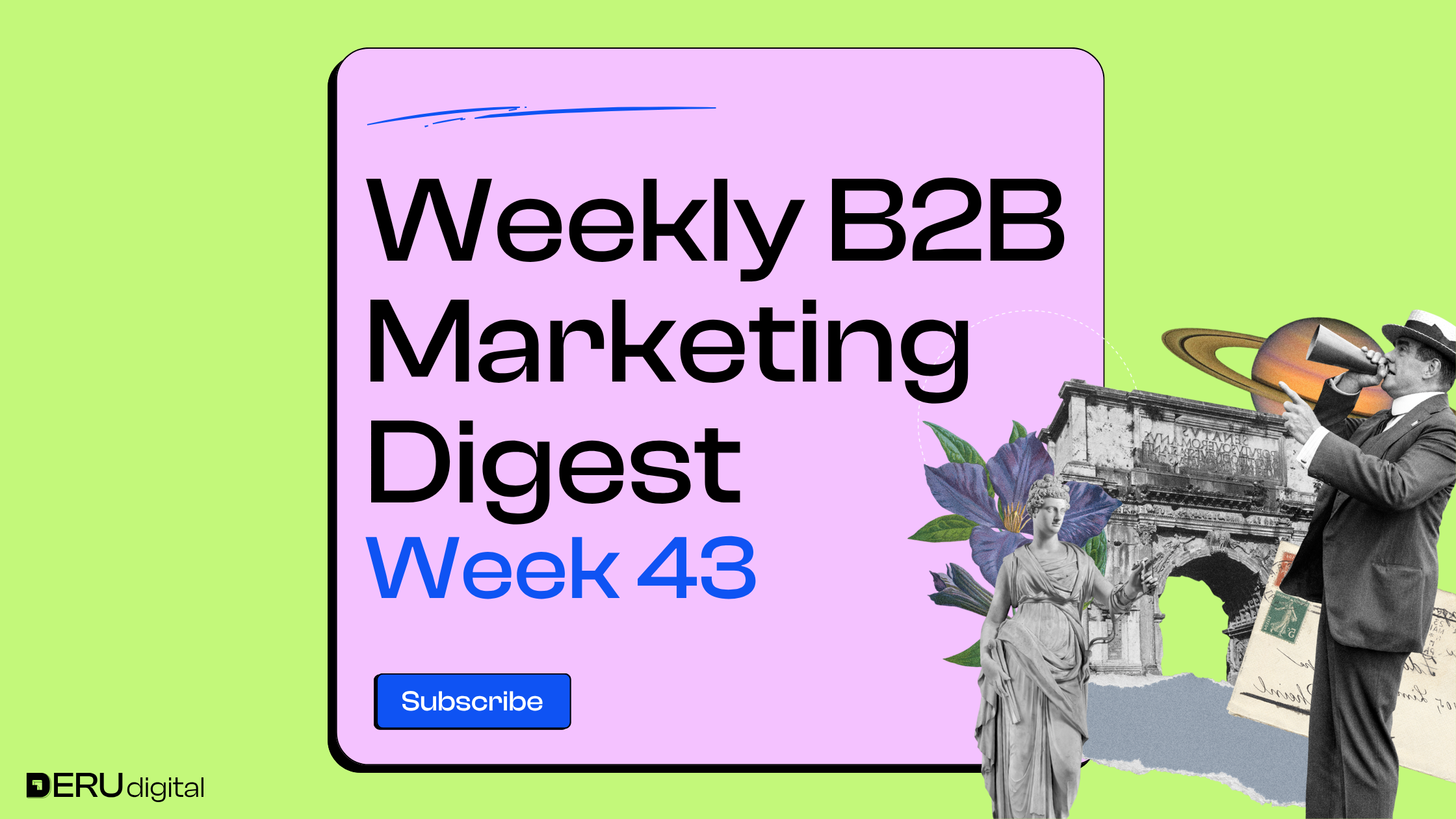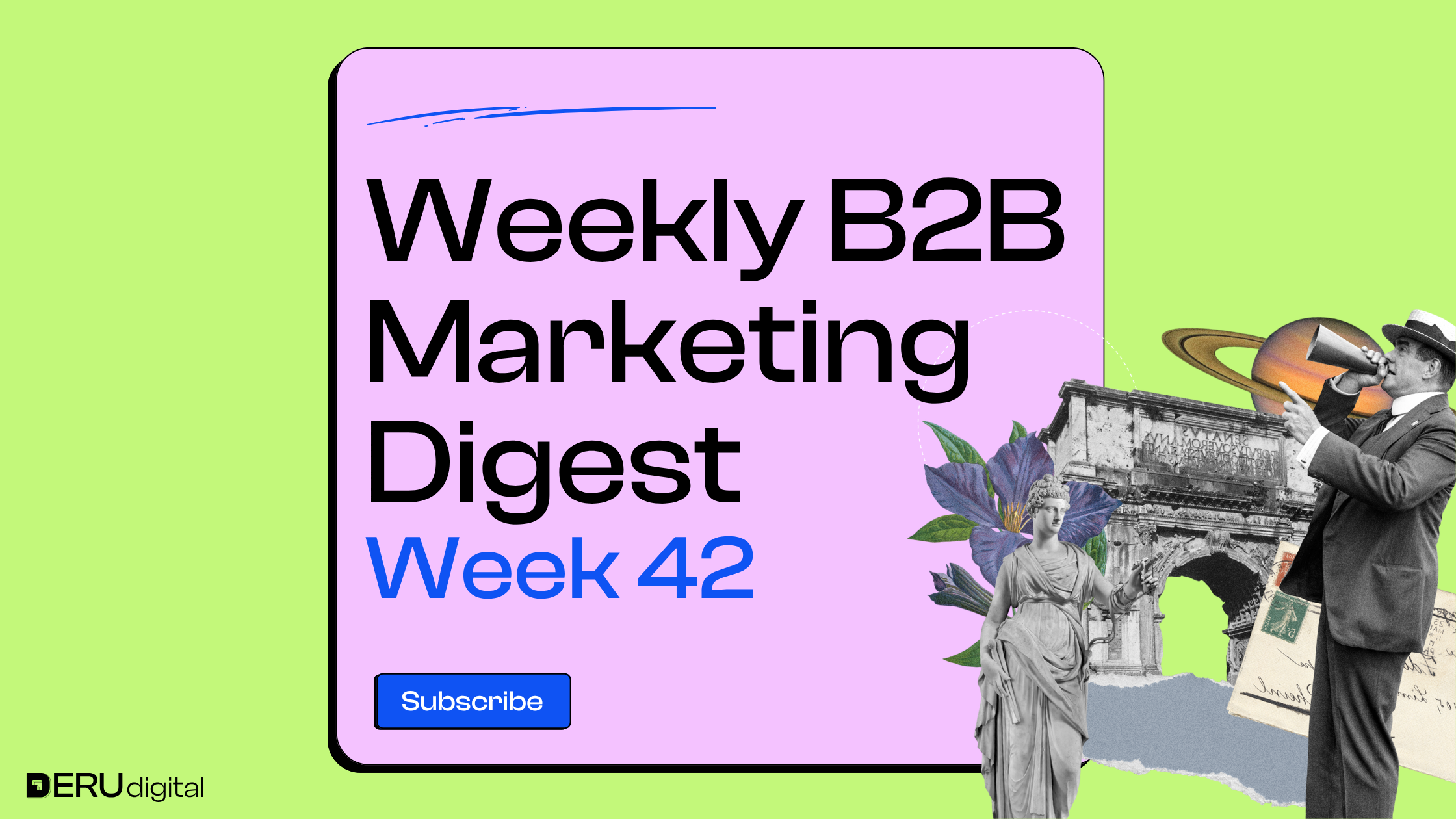INSIGHTS FROM EXPERTS ON LINKEDIN
Canberk Beker says the way companies structure their GTM teams is flawed because it splits paid search, paid social, inbound, and outbound into separate silos with different goals. He believes marketing should be one unified demand generation strategy, measured by sales velocity and conversion rates instead of disconnected metrics. Marketers need to stop focusing only on individual channels and start looking at the bigger picture to drive real growth.
Julia Kinner explains that small brands shouldn’t try to copy giants like Nike or Apple because they don’t have the same resources, market reach, or cost advantages. Instead, they should focus on a STP strategy – finding smaller market segments where they have the best chance to stand out. By focusing on the right audience and tailoring their approach, small brands can grow without wasting resources trying to compete on a big scale.

Sam Kuehnle points out that when companies fall behind on revenue, they often react by pushing for more calls, more ads, and more budget – but this usually leads to worse margins. Instead, he says businesses should focus on improving efficiency, optimizing conversion rates, and making smarter investments. Rather than just doing more, companies should look at what’s actually working and make the most of it.

Silvio Perez warns against constantly launching new ad campaigns without enough budget behind them, as spreading spend too thin weakens results. Instead, he suggests calculating how many active campaigns and ads a budget can actually support to ensure each gets enough data to perform well. The key is shifting from running more campaigns to making existing ones more effective.
Dale W. Harrison explains that marketing lag isn’t about waiting months for results to suddenly appear – it’s the natural delay between marketing efforts and when buyers take action. Some leads convert right away, while others take weeks or months, especially in B2B sales with long cycles. Ignoring this leads to unrealistic expectations and poor decision-making in marketing strategy.

Steve Patti highlights that simply proving business value isn’t enough to win B2B buyers – personal value matters even more. Buyers are influenced by factors like career growth, recognition, job security, and how a decision impacts them personally. Marketers and sales teams who tap into these personal motivations can drive better engagement, trust, and conversions.
Ginny Marvin shares upcoming changes to Demand Gen campaigns, including more control over where ads appear, expanded inventory on Google Display Network, and new reporting tools. Updates also include vertical image ads for Shorts, automated video shortening, and new beta features for merchants, such as quick access to product details and local inventory visibility. These updates aim to improve ad performance and user experience.
Nick Turner explains that inbound and outbound marketing are deeply connected, not separate silos. Tracking both is important for accountability, optimization, and collaboration. Understanding how different efforts contribute to the sales funnel leads to smarter decision-making and better revenue growth. The key isn’t choosing one over the other – it’s making both more effective.
Kieran Flanagan addresses claims about HubSpot losing 80% of its organic traffic, explaining that traffic isn’t the main goal – relevance and conversions are. HubSpot has focused on influencer marketing, pruning low-converting content, and adapting to AI-driven search trends. As AI changes how users find information, businesses must prioritize fit, brand influence, and new search optimization strategies.
WHAT'S NEW IN THE INDUSTRY
YouTube is testing a new ad format allowing brands to own its Masthead ad space by the hour, giving them 100% visibility across all devices during key moments. This Cost-Per-Hour (CPH) model offers more precise control over product launches, major announcements, and cultural events compared to traditional impression-based pricing. While pricing details remain undisclosed, this move signals YouTube’s shift toward more time-sensitive and high-impact advertising options.

Microsoft is testing major updates to Performance Max, including LinkedIn integration for professional audience targeting in key markets. The update also introduces granular reporting, smart conversion tracking, and options for focusing on new customers, giving advertisers greater control over their campaigns. These changes position Microsoft Ads as a stronger competitor to Google, particularly for B2B marketers leveraging LinkedIn data.
Google has reversed its position on Performance Max (PMax) campaign controls, now confirming that API-based placement exclusions do work—contradicting months of official documentation. A study by Optmyzr revealed that advertisers can exclude placements programmatically, offering greater control over where their ads appear. This discovery highlights the need for advertisers to test platform limitations rather than blindly trusting official guidance.

Google has officially released Meridian, an open-source marketing mix model (MMM) designed to help advertisers measure cross-channel impact and optimize budgets. The tool integrates with Google’s MMM Data Platform, incorporates Bayesian causal inference, and allows marketers to customize models for better measurement of digital campaigns. With increasing pressure to justify ad spend, Meridian provides transparency and actionable insights, positioning itself as an alternative to traditional black-box measurement solutions.
Google is enhancing its Demand Gen platform with new channel controls, creative tools, and retail-focused features while phasing out Video Action Campaigns. Advertisers will gain more precise ad placements, vertical video options, and omnichannel bidding capabilities, improving campaign performance across YouTube, Discover, and Gmail. With a strong return on ad spend compared to paid social, Demand Gen is becoming Google’s primary video advertising solution, replacing Video Action Campaigns by July.
Meta is removing manual Audience Types targeting from Advantage+ catalog ads, pushing advertisers toward AI-driven product recommendations. While this limits direct audience selection, Meta claims its automated targeting improves ad performance by leveraging user behavior data from Meta Pixel and app SDK. Advertisers can still use catalog custom audiences for retargeting, but the change reflects Meta’s confidence in AI outperforming human audience selection.

Google now provides one-on-one appointments with technical experts to help advertisers implement conversion tracking tags correctly. Proper tracking is essential for measuring ROI, unlocking smart bidding features, and ensuring campaign performance accuracy. These 30-to-60-minute sessions will guide advertisers and developers through the setup process, preventing data issues that could lead to wasted ad spend.


That’s the scoop for this week! If you found this valuable and any useful insights caught your eye, feel free to share them with your network.
Until next week!



